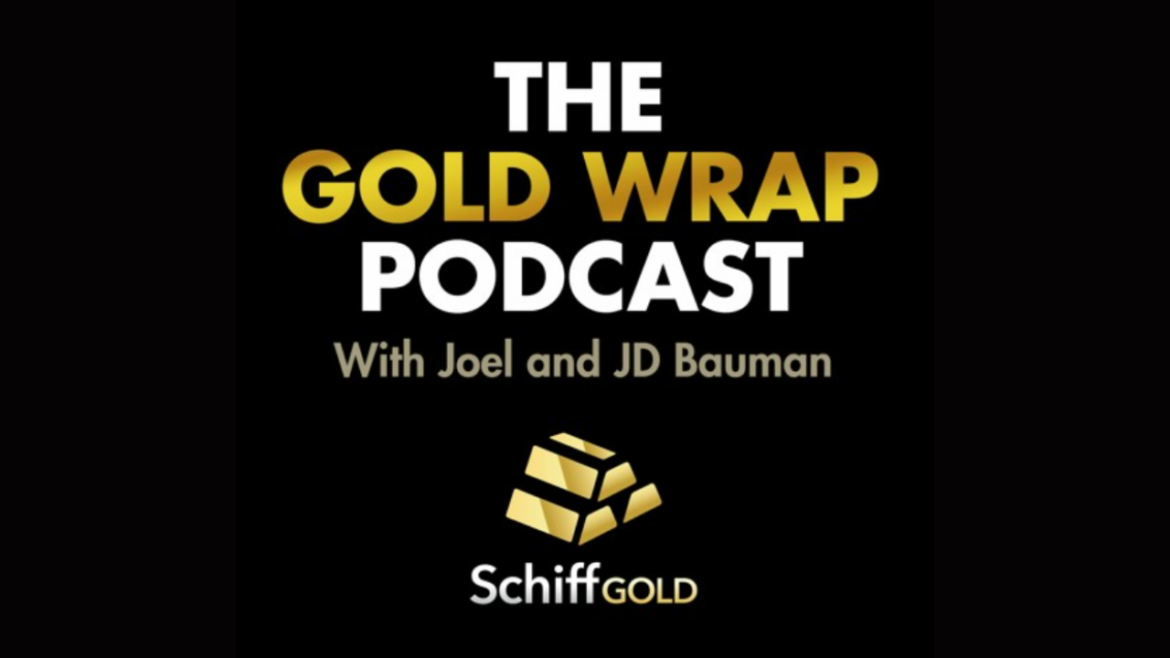Precious metals are apparently waking up. And here is where you can find the best deals.
Site:
Precious metals news
Since John Williams became president of the New York Federal Reserve in 2018, concerns have arisen about the institution's declining influence and loss of talent. Numerous senior officials have left since 2022, raising worries about a brain drain. Critics point out that Williams, despite his strong macroeconomic background, lacks the market experience of his predecessors. Meanwhile, other regional Fed presidents with deeper finance backgrounds are perceived as overshadowing New York's traditionally dominant role. This is concerning as the New York Fed has historically been crucial in managing financial crises and will play a key role in future economic challenges.
Oil prices rose after last week's decline, with Brent crude surpassing $80 a barrel as traders anticipate key industry reports and a Federal Reserve decision on interest rates. Prices had fallen following OPEC+ plans to increase output later this year, leading to a significant drop in bullish bets on oil. Upcoming reports from OPEC and the International Energy Agency, along with the Fed's rate decision, are expected to provide further market direction. Analysts at Goldman Sachs forecast a significant market deficit in Q3, maintaining their Brent oil price range of $75-$90. Meanwhile, Iraq is nearing an agreement to resume disrupted oil exports from Kurdistan.
The upcoming May Consumer Price Index (CPI) report is anticipated to show lower headline inflation, primarily due to cooling energy prices, but core inflation is expected to remain elevated. The Federal Reserve is likely to maintain interest rates in June, waiting for more supportive data before considering cuts later in the year. The May CPI data, scheduled for release at 8:30 am ET on June 15, is projected to show 0.08% headline inflation and 0.3% core inflation. Policymakers will closely monitor trends in shelter costs and services prices, particularly due to their significant impact on inflation.
Concerns about a recession among executives have significantly diminished. A FactSet analysis revealed that mentions of "recession" during S&P 500 earnings calls have dropped to their lowest level since late 2021. Only 29 companies mentioned the term recently, reflecting reduced anxiety compared to the past five and ten years. This decline in recession talk follows the easing of inflation fears that peaked in 2022. Despite earlier worries, the U.S. economy continues to perform well, adding 272,000 new jobs in May, surpassing expectations.
Americans' intense dislike for inflation poses a significant challenge for the Federal Reserve. Despite improvements, inflation remains above the Fed's 2% target, with April's rate at 2.7%. This situation complicates the Fed's decision-making, as policymakers are expected to keep interest rates steady at their highest level in over two decades. Pre-pandemic, some economists argued for a higher inflation target to avoid the "zero lower bound" problem, where the Fed's ability to cut rates in a recession is limited, leading to prolonged economic recovery and joblessness.
 Gold Prices Steady After Major Sell-Off Amid China and U.S. Economic News
Gold Prices Steady After Major Sell-Off Amid China and U.S. Economic NewsJun 10, 2024 - 08:53:22 EDT
Gold prices remained steady on Monday after experiencing the largest drop in three and a half years on Friday due to China's central bank halting its gold purchases and a strong U.S. jobs report diminishing hopes of an imminent interest rate cut. Spot gold was stable at $2,296.17 per ounce, while U.S. gold futures dipped 0.5% to $2,313.30. The significant decline on Friday, a 3.5% drop, followed 18 months of continuous buying by China and unexpectedly strong U.S. employment data. Market expectations for a September rate cut by the Federal Reserve fell from 70% to 50%. The Fed's upcoming policy meeting and U.S. inflation data will be closely watched.
 WHO JUST BECAME THE NEW THIRD LARGEST PSLV HOLDER: How The Coming Surge Of Institutional Silver ETF Investment Will Crowd O...
WHO JUST BECAME THE NEW THIRD LARGEST PSLV HOLDER: How The Coming Surge Of Institutional Silver ETF Investment Will Crowd O...June 10, 2024
This institution just became the third-largest holder of the Sprott PSLV ETF, and is why it represents a coming trend-change in global silver investment. I also believe future institutional Silver ETF investment will likely crowd out retail investors who will move more into physical metal buying...
 PRECIOUS METALS & BITCOIN MARKET UPDATE JUNE 8th: High Short Positions In All Three Assets
PRECIOUS METALS & BITCOIN MARKET UPDATE JUNE 8th: High Short Positions In All Three AssetsJune 8, 2024
Not only have Gold, Silver, and Bitcoin been trading in similar patterns, but all three assets have high short positions. In fact, Bitcoin just registered the highest short position this week. So, what does this mean for precious metals and Bitcoin going forward...
The real estate market is responsible for anywhere from 20% to over 30% of China’s GDP (depending on who you ask). And with the latest meltdown that began with the implosion of Evergrande, the situation just keeps getting worse, inspiring a slew of government interventions beyond the scope of what would be possible in a country like the US.
Oil prices trimmed gains on Friday due to heightened demand concerns after stronger-than-expected U.S. jobs data diminished hopes for an imminent Federal Reserve rate cut. Brent crude rose by 12 cents to $79.99 a barrel, and U.S. West Texas Intermediate increased by 28 cents to $75.83. The robust jobs report suggests that rate cuts may be delayed until at least September, impacting expectations for economic activity and oil demand. Despite this, OPEC+ support from Saudi Arabia and Russia has helped stabilize prices.
In May, the U.S. added 272,000 jobs, significantly surpassing expectations of 190,000 and the previous month's 165,000. Despite the job growth, the unemployment rate rose to 4%, the highest since January 2022. Job gains were primarily in health care, government, and leisure and hospitality. Average hourly earnings also increased by 0.4% for the month and 4.1% year-over-year.
In May, the global gold market rebounded with gold ETFs ending a 12-month slump, driven by strong demand in Europe and Asia. Global gold ETF holdings rose to 3,088 tonnes, with assets under management reaching $234 billion, a 2% increase. India emerged as the third-largest gold buyer, purchasing $86.5 million worth. European and Asian gold ETFs saw significant inflows, while North America experienced minor outflows. Trading activities declined overall, with the average daily volume down 13% from April.
Following the announcement of the general election on July 4th by Prime Minister Rishi Sunak, The Royal Mint has reported a significant increase in gold sales. Investors, seeking a safe haven during political uncertainty, have caused gold purchases to rise by 117% and spending on bullion to jump by 145%. Notably, 10% of recent buyers are new to investing in precious metals.
Are we on the brink of a nuclear conflict? In this critical video, Mike Maloney dives deep into the escalating tensions between Russia and NATO
In light of the recent pullback and low premiums, now is a unique opportunity to buy silver with prices 40% below their historic highs of $50 per oz. JD and Joel also discuss the cause of the price pullback this week, the shocking Berkshire's stock price fumble, and the 8-figure-fortunes of a GameStop day-trader.
The analysis below covers the Employment picture released on the first Friday of every month. While most of the attention goes to the headline number, it can be helpful to look at the details, revisions, and other reports to get a better gauge of what is really going on.
Public schools are losing students to charter education, and government officials are doing whatever they can to bail them out.On March 6th, Colorado House Bill 1363 was proposed. The legislation included several anti-charter school reforms, including decreasing funding and allowing public schools with declining enrollment to prohibit new charter schools within the district. However, with the proposal being denied, public schools remain helpless to the rampant success of charter education.
Food has gotten big. Literally. A walk through the produce aisle of a 21st-century grocery store would enthrall people of any historical period other than our own. The size of tomatoes and heads of lettuce is unprecedented in the history of humankind. In just a few short generations we have become accustomed to increasingly genetically modified food. This new food is much more tasteless and durable than food of the past.
Saudi Arabia has joined Project mBridge, a central bank digital currency (CBDC) cross-border trial led by China and supported by the Bank for International Settlements (BIS). This project, which includes central banks from China, Hong Kong, Thailand, and the UAE, aims to facilitate cross-border transactions and reduce reliance on the U.S. dollar in global oil trade. The BIS announced that Project mBridge has achieved the "minimum viable product" stage, advancing beyond the prototype phase. The initiative highlights the growing global interest in CBDCs, with 135 countries exploring their potential despite technical and political challenges.
It's time for the Federal Reserve to cut interest rates, having effectively cooled inflation through aggressive hikes. Persistently high rates are based on a flawed understanding of homeownership costs, which risks unnecessary economic harm. Inflation, measured by the personal consumption expenditures (PCE) deflator, peaked over 7% two years ago and has since fallen below 3%, though still above the Fed's 2% target. However, the PCE and consumer price index measures of inflation are flawed due to their problematic reliance on estimated rental costs for homeowners.













